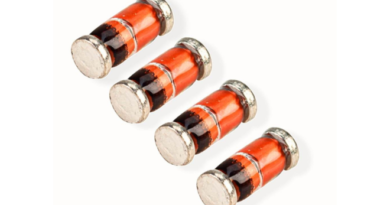The Magic Behind the Click: Inside the Mechanics of a Torque Screwdriver
Torque screwdrivers are a ubiquitous tool in many industries, ensuring that fasteners are tightened to precise specifications. At the core of this precision instrument is a mechanism that magically ‘clicks’ to signal the user that the desired torque has been reached. But what’s really happening behind that satisfying sound? Dive deep into the mechanics of a torque screwdriver and discover the marvel that lies within.
From Simple Lever to Precision Instrument
At its core, every torque tool operates on the principle of leverage. Ancient civilizations, including the Greeks and Egyptians, utilized levers to move heavy objects. The torque screwdriver, however, is a testament to how this ancient concept has evolved, incorporating modern engineering to offer precise measurements and applications.
How Does It Work?
A torque screwdriver is essentially a calibrated spring mechanism. When you apply rotational force (torque) to the screwdriver, this force is resisted by the spring inside. As the force increases, the spring compresses up to a point. Once the preset torque value is reached, the mechanism is designed to ‘break’ or ‘slip,’ producing the distinct ‘click’ sound.
The Internal Calibration Spring
The heart of the torque screwdriver is its internal spring. When you adjust the torque setting on the tool, you’re essentially changing the compression tension of this spring. By tightening the setting, you’re compressing the spring further, and it requires more force to reach the point where the mechanism breaks. Loosening the setting does the opposite.
The Break Mechanism
What makes the torque screwdriver unique from a regular screwdriver is its break mechanism. This component is designed to momentarily disengage or slip once the desired torque is reached. It’s this slipping or disengagement that produces the click sound. After the click, the tool can still turn, but without applying additional torque. This ensures the fastener isn’t overtightened.
The Clutch System
Most modern torque screwdrivers incorporate a clutch system that engages and disengages based on the torque applied. There are various types of clutches, but the most common is the cam-over clutch. When the set torque is achieved, the clutch cam ‘rides over’ a connected component, allowing continuous rotation without additional force.
Calibration is Key
For a torque screwdriver to maintain its precision, regular calibration is essential. Over time, repetitive use can wear down the components or cause the spring to lose its tension. By calibrating the tool regularly, you ensure it remains accurate and provides the exact torque settings required for the task. Calibration involves comparing the screwdriver’s output to a known standard and making necessary adjustments.
The Magic Beyond the Click
What might seem like magic is actually the culmination of centuries of understanding leverage, combined with modern engineering innovations. The torque screwdriver’s magic isn’t just in its click, but in the myriad of applications it empowers:
Safety
In industries like aerospace and automotive, the precise torque is critical. A bolt tightened too much or too little can have catastrophic consequences. The torque screwdriver ensures every fastener is tightened just right, ensuring the safety of products and their end users.
Longevity of Products
Over-tightening can strain and damage parts, leading to reduced lifespan and frequent replacements. By using a torque screwdriver, parts are secured to their optimal tightness, ensuring longevity and consistent performance.
Efficiency and Consistency
The consistent click of the torque screwdriver ensures that every fastener, across hundreds or even thousands of units, is tightened to the same specification. This consistency is invaluable in mass production settings.
Conclusion
Behind every click of a torque screwdriver is a symphony of mechanics and engineering, ensuring precision, safety, and consistency. From ancient levers to the sophisticated tools of today, the journey of understanding and harnessing torque is a testament to human ingenuity. So, the next time you hear that satisfying click, remember the magic and mechanics that make it all possible.



